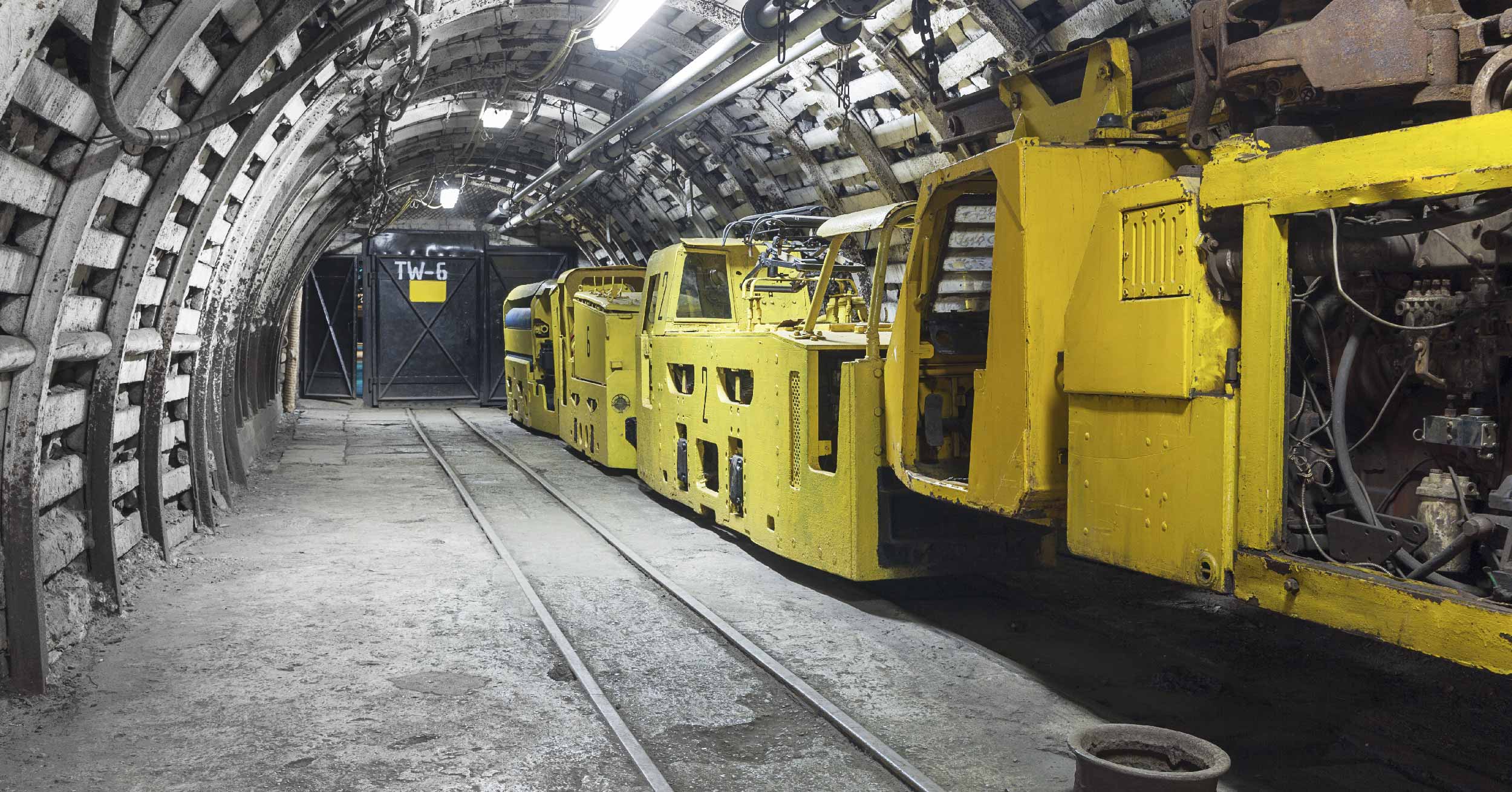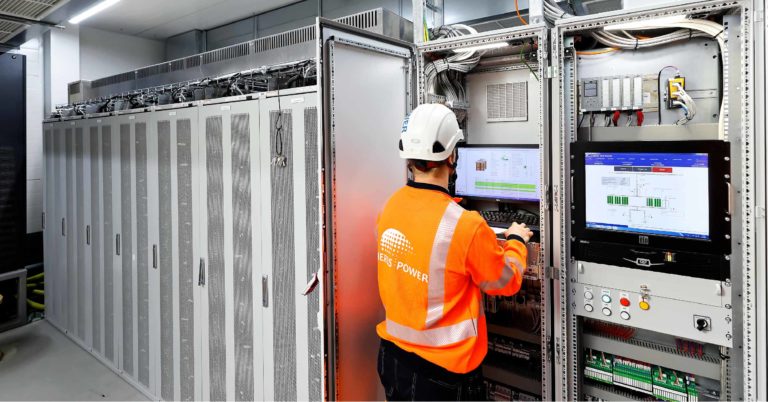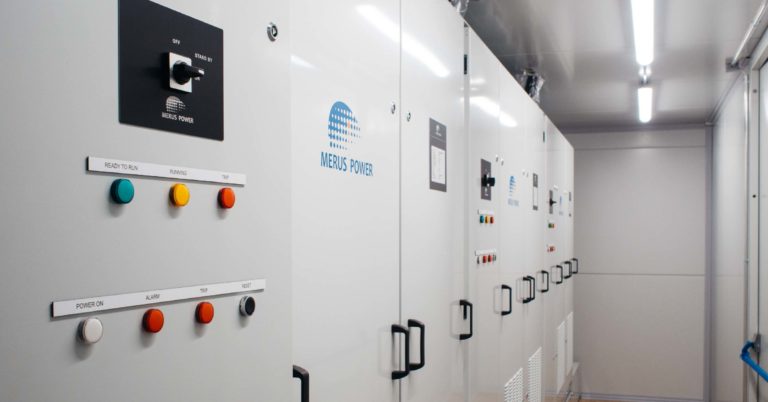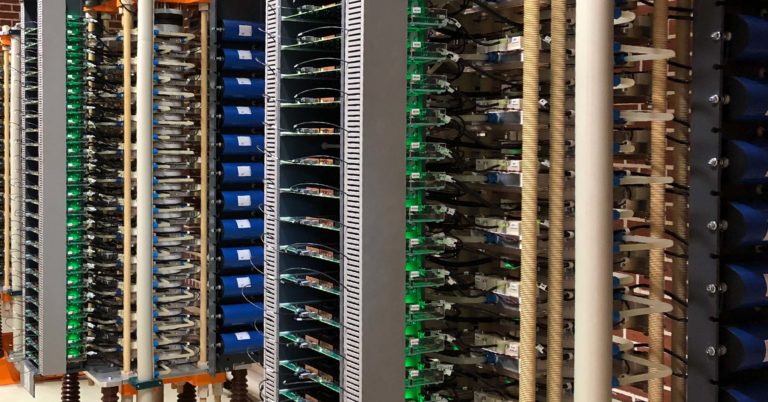Merus® ESS – Energy storage system
Merus® Energy Storage System is a scalable lithium-ion battery energy storage system fully designed by Merus Power.

Mining and mineral plants are typically located in remote areas far from power generation plants. Power is distributed through long overhead lines, which may stretch up to hundreds of kilometers, weakening grids and lowering their fault levels.
Power quality issues arise when a weak network is used to feed large winders, sag mills, or other heavy mining loads. When the heavy motors are started, arising flicker and voltage sags may disturb other loads in the plant. Voltage sag may also significantly reduce motor torque and thus affect productivity.
Even if mining plants have their own generators, the dynamic reactive power requirements of the major loads force them to run more generators to ensure that they can provide enough reactive power. This leads to higher fuel consumption and thus higher operational costs.
Another major concern in mining plants is high harmonic distortions caused by direct current (DC), cyclo-converter, and Variable Frequency Drives (VFDs). Problems from high harmonic distortions vary from extra losses in the power system to lowering the lifetime of equipment and possible nuisance tripping of protection relays.
Applications such as mine winders sag mills, ball mills, rod mills, conveyors, crushers, grinders, excavators, fans, pumps, compressors, shovels, kiln drives, etc.

Merus® Energy Storage System is a scalable lithium-ion battery energy storage system fully designed by Merus Power.

Merus® STATCOM is a modular and modern Static Synchronous Compensator for demanding applications and heavy industrial loads.

Merus® SVC is a cost-effective Static Var Compensator solution with fast reactive power compensation for higher-power-class applications.